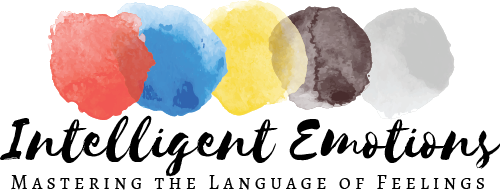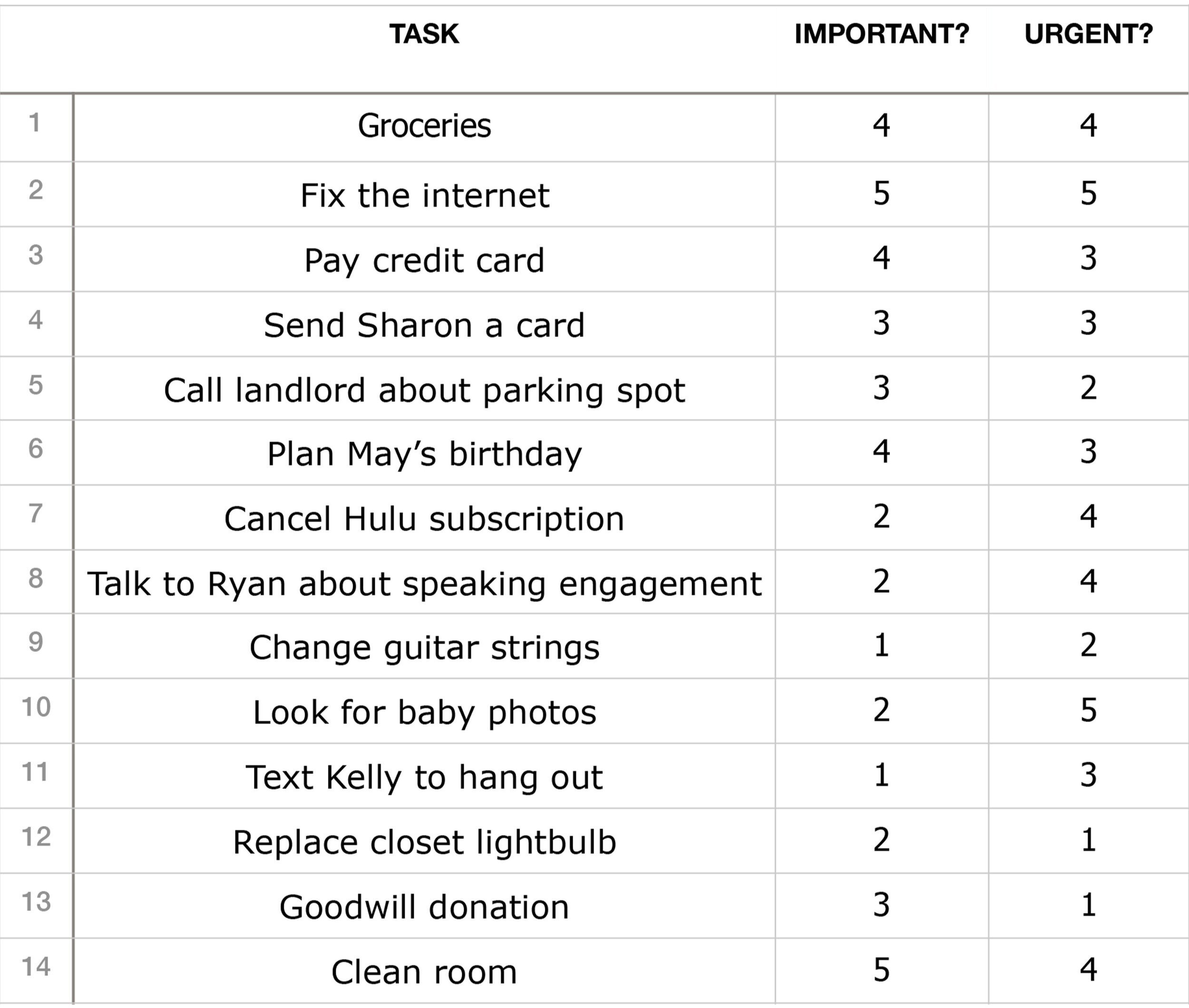Overcoming Overwhelm with the Triage Chart
Feeling overwhelmed by a million things that seem both important AND urgent?
A triage chart is a way to categorize what needs your best attention—it helps you declutter and focus.
I’m about to show you some tricks for overcoming overwhelm with the triage chart!
Overwhelm Overload
As a therapist with my own practice in Silicon Valley, I juggle countless tasks that ALL seem urgent.
Being a highly sensitive person (HSP), I find myself easily overwhelmed and don’t do well under pressure. When I’m stressed, the exact executive functions I need to tap into are the first to bail.
Sometimes, I wish there was an extra hour in each day, but most likely, that extra hour would fill up so fast it would be as if it was never there in the first place.
Many of my clients also feel swamped by tasks they feel are super important and NEED to get taken care of right away.
When their to-do list gets longer, it becomes even more difficult to make good decisions, and the urge to just bury their heads in the sand kicks in. (Did it go away yet?)
By the way, here’s a blog post that can help you make decisions as an HSP!
When this happens, some may end up binging on Netflix or snacking in order to de-stress, not realizing that it doesn’t help at all with getting things off their plate. (Ring any bells?)
The Triage Chart (A.K.A. The Eisenhower Matrix, but that’s a mouthful) can help you CLEAR YOUR MENTAL CLUTTER so that with the extra headspace, you can FOCUS on what actually matters most at the moment and give it your all ‘til it’s really done!
(Afterwards, you’ll probably realize that the task that felt like a giant monster is actually a tiny mosquito.)
What is Triage?
Triage comes from the French word “trier” meaning to sort.
The term probably sounds familiar because it is often used in Emergency Rooms. The Head Nurse takes a look at everyone, figures out who's in the most critical shape, and decides the order they're seen.
The Nurse’s primary goal is to keep as many people alive and healthy as possible. Triage is the way to make that happen.
Let’s say there’s someone with a dislocated shoulder. Definitely painful and urgent, right? Most definitely.
But if another person comes in with a gunshot wound, they have to wait. It’s tough, but the shoulder can hold up a bit longer while life-threatening issues are handled first.
How do you keep the most people alive and well? By prioritizing those whose conditions are BOTH super important AND super urgent, NOT based on the order in which they came in.
It's not about first-come, first-served.
And our lives? They’re kinda similar. If we want to manage the overwhelm that comes with countless to-do lists, we need to learn how to declutter and prioritize.
And I’m going to show you how you can use the Triage Chart for this.
Declutter Your Mind
If you’d like a handout with these instructions, download it here:
First up, let’s clear your head.
Grab a sheet of paper and jot down EVERYTHING that’s weighing on you.
Don’t analyze (we’ll get to that later), and don’t judge (this ain’t helpful).
What’s on your mind?
What is stressing you out?
What needs to get done?
What feels like it’s on fire?
Write it all down until there’s nothing left to add.
Once you've got a list of 10 or more items, draw two vertical lines to create two columns next to your list: one labeled "IMPORTANT" and the other "URGENT."
Then, rate each item on a scale from 1 to 5, with 1 being the least and 5 being the most in terms of how important and urgent each task feels.
Here’s an example to help you with rating:
Say you’ve got a major work project due in two days—it’s obviously both urgent AND important, so you’d give it a 5 in both columns.
You also have bills that need to be paid, but you still have a couple of weeks until they are due. They’re important, sure—so maybe they get a 4 in importance. But since the deadline isn’t breathing down your neck yet, you might score them a 3 in urgency.
And that argument you had with your spouse earlier this morning over something trivial, like forgetting the trash? It might bug you, but it’s hardly a deal-breaker for your relationship, so the importance can be ranked pretty low (1-2); but since it is something that you are bothered by, you might rank the urgency to resolve it a bit higher (3).
Overcoming Overwhelm with the Triage Chart
Once you've ranked each item on your list, the triage chart will guide you on where to place each task in the box and what you should do next.
[BOX A] IMPORTANT & URGENT (Both 4-5):
DO THESE NOW!
Do ONLY these tasks NOW. Ignore everything else.
Note: keep this list to a maximum of 3-5 items. If your list has already reached its capacity, you will need to figure out where else to put the rest of those items. Most likely, they will go into Box B (important but less urgent than others).
[BOX B] IMPORTANT (4-5), Not URGENT (1-3):
Do These LATER!
These tasks matter but aren't screaming for immediate attention.
You can afford to put them off for some time without it being a big deal. Once you clear Box A, pull the next 2-3 tasks from Box B.
[BOX C] URGENT (4-5), Not IMPORTANT (1-3):
Draw BOUNDARIES; Urgent for Whom?
This one can be a bit tricky.
Sometimes you think a task deserves all your energy because it feels urgent, but really, it’s just that rush making you freak out.
There may be some cases where you end up dealing with other people’s responsibilities or taking on tasks because others have anxiety over them and are expecting/demanding that you do something about it.
Take, for instance, a family member who’s pressing you to get something done ASAP. You ask them, “Why?” and all they have is, “It just needs to happen now.”
Here’s where setting boundaries comes into play: Their emergency doesn’t automatically have to be yours.
You shouldn’t have to pick up their slack unless you really don’t have anything else to do, AND you feel okay doing it without getting resentful later.
Read more about resentment in relationships here.
If you aren’t really sure WHY something’s gotta be done pronto, ask yourself, “This is urgent for whom?”
Toss out any tasks rated 1-2 on your list—they’re not worth your time or energy. Focus on what really matters.
[BOX D] NEITHER IMPORTANT NOR URGENT (Both 1-3):
These are DISTRACTIONS; Do only AFTER A & B are done!
Just go ahead and scratch those tasks off your list. No point in spending any more energy on them.
Sort Out Your List, Then Get to It!
After going through this process, you'll clearly see where you need to zero in.
Some items have been completely ditched, whereas it’s clearer where you need to focus your precious time and energy.
When you’re feeling too overwhelmed, and your body feels like it’s shutting down when it needs to be productive, don’t keep everything in your head.
That’s like juggling 3-4 grocery bags while fumbling for your keys - a hard no if you want to avoid a disaster. So set some of that load down first, open the door, drop off what you’re carrying, then go back and get the rest.
Save this so you don’t forget about it!
The BIG Feelings First Aid Kit
Messy feelings spilling out at the WRONG TIME, WRONG PLACE, WRONG WAY?
Grab this free PDF guide that shows you how to handle feelings like a pro so that you can keep moving forward in life!
Other Blogs on Personal Growth
© Copyright 2024 Joanne Kim. All rights reserved.
Joanne Kim, Feelings Translator
Hi! I’m a therapist-turned feelings coach who helps Highly Sensitive Persons, Empaths, Enneagram 2s & 4s, etc. turn their BIGGEST feelings into their GREATEST superpower!
They are often the first (or only) person in their family to intuitively process and express feelings; consequently, they are often judged or criticized so that they learn to people please, placate, or perform until they hit a wall.
They’re super familiar with anxiety, guilt, and shame, partly because of an allergic reaction to anger (theirs and others').
Often the super responsible, empathic, and ethical person in their environments, they reach out to me after they're already burned out, resentful in their relationships, or sucked into their shame spiral.
The most common feedback I get from people when I share about how feelings work is,
"Why didn't anyone teach me this in school??"
Hence, I am building a school helping people work WITH their feelings so their feelings work FOR them.







































Perhaps there’s a better North Star to follow than The Pursuit of Happiness! Learn more about Emodiversity, the top indicator of wellness that speaks to the breadth & depth of emotions that you experience!